
http://www.iaeme.com/IJM/index.asp 203 editor@iaeme.com
International Journal of Management (IJM)
Volume 7, Issue 6, September–October 2016, pp.203–210, Article ID: IJM_07_06_023
Available online at
http://www.iaeme.com/ijm/issues.asp?JType=IJM&VType=7&IType=5
Journal Impact Factor (2016): 8.1920 (Calculated by GISI) www.jifactor.com
ISSN Print: 0976-6502 and ISSN Online: 0976-6510
© IAEME Publication
THE IMPACT OF THE HRM PRACTICES ON THE
EMPLOYEE TURNOVER AMONG IT/ITES
ORGANIZATIONS
Mr. R. Anbu Ranjith Kumar
Research Scholar, Department of Management Studies,
Karpagam University, Coimbatore, India
Dr. S. Balasubramanian
Chief Editor, IAEME Publication, Chennai, India
ABSTRACT
The best practices in the management of human resources are the ones which enhance a
workforce so that it cannot get the work done, but also ensure a bigger level of efficiency,
timeliness and quality as it accomplishes overall increase productivity.
Hence the job of the best practices human resources firm is to make sure that these benefits and
pay scales meet the company’s budget which are attractive and competitive enough to pull in the
very best talent possible. It is know that these figures put the company in a good light while also
presenting themselves as engaging and competitive for company’s recruitment efforts. The sample
for this study is 100 IT professionals with more than one-year experience in IT/ITES Organization.
The primary data is collected personally. Before dispensing the final questionnaire all the
questionnaire are checked with three IT professionals as to find out whether the questionnaire is
explicable, needs improvements etc.
Key word: ITPIL, HRM and Employee Turnover
Cite this Article: R. Anbu Ranjith Kumar and Dr. S. Balasubramanian, The Impact of HRM
Practices on Employee Turnover among IT/ITES Organizations. International Journal of
Management, 7(6), 2016, pp. 203–210.
http://www.iaeme.com/IJM/issues.asp?JType=IJM&VType=7&IType=6
1. INTRODUCTION
Employee turnover indicate the number or percentage of workers who leave an organization and are
replaced by new employees. Measuring employee turnover can be helpful to employers that want to
examine reasons for turnover or estimate the cost-to-hire for budget purposes.
Many factors play a major role in the employee turnover rate of any company and these can from both
the employer and the employees. Wages, company benefits, employee attendance, and job performance are
all factors that play a significant role in employee turnover.

R. Anbu Ranjith Kumar and Dr. S. Balasubramanian
http://www.iaeme.com/IJM/index.asp 204 editor@iaeme.com
To reduce the employee turnover rate the company has to concentrate more on working condition and
Safety measures. So it leads the organization to retain their employees
2. LITERATURE REVIEW
Manu et al. (2004) indicated that employees quit from organization due economic reasons. Using economic
model they showed that people quit from organization due to economic reasons and these can be used to
predict the labour turnover in the market.
Loi et al. (2006) has indicated contrary to be true, that is, there existed negative relationship between
turnover intention and both procedural and distributional justice.
Elanain Abu (2010) the study disclosed that the perception of organizational justice had an influence
on work outcomes. A low degree of turnover intention was observed on employees who showed positive
feelings towards procedural and distributive justice.
3. HYPOTHESES FORMULATED
Based on the conceptual model the following hypotheses are formulated for this study.
H1: There is a negative relationship between the realistic job information and IT Professional Intention to
Leave (ITPIL)
H0: There is no relationship between the realistic job information and ITPIL
H2: There is a negative relationship between the job analysis and IT Professional Intention to Leave
(ITPIL).
H0: There is no relationship between the job analysis and ITPIL
H3: There is a negative relationship between the work family balance and IT Professional Intention to
Leave (ITPIL).
H0: There is no relationship between the work family balance and ITPIL
H4: There is a negative relationship between the career development and counseling and IT Professional
Intention to Leave (ITPIL).
H0: There is no relationship between the career development and counseling and ITPIL
H5: There is a negative relationship between the compensation and other benefits and IT Professional
Intention to Leave (ITPIL).
H0: There is no relationship between the compensation and other benefits and ITPIL
H6: There is a negative relationship between the manager support and IT Professional Intention to Leave
(ITPIL).
H0: There is a no relationship between the manager support and ITPIL
H7: There is a negative relationship between the Organizational commitment and IT Professional Intention
to Leave (ITPIL).
H0: There is a no relationship between the organizational commitment and ITPIL
H8: Combined HR practices will significantly explain the variance in the IT Professional Intention to
Leave (ITPIL).
H9: Combined HR practices and organizational commitment will significantly explain the variance in the
IT Professional Intention to Leave (ITPIL).

The Impact of HRM Practices on Employee Turnover among IT/ITES Organizations
http://www.iaeme.com/IJM/index.asp 205 editor@iaeme.com
4. RESEARCH METHODOLOGY AND SAMPLING
4.1. Objective of the Study
• A study on employee turnover in IT industry with special reference to Multinational IT Company
• IT Professional Intention to Leave (ITPIL) refers to IT professional’s plans to leave the organization.
• To know the job satisfaction level of the employee working in the industry.
• To provide some suggestion to reduce the employee turnover and retain the employees
The sample for the study is 100 IT professionals who are having more than 1 year of experience in
IT/ITES Organization. We are used random sampling method to collect the dada. The period of study from
2012 to 2014. The primary data is collected personally. Before dispensing the final questionnaire the all
questionnaire are checked with three IT professionals as to find out whether the questionnaire is
understandable, needs improvements etc.
Questionnaire consists of 70 questions. First sixty-six questionnaires are designed in a five point Likert
scale to measure the HR practices, organizational commitment and IT professional’s intention to leave.
Five point Likert type scale is used in the questionnaire to measure HR practices and organizational
commitment. 5 for strongly agree, 4 for agree, 3 for neutral, 2 for disagree and 1 for strongly disagree are
given in order to analyze the data. Questions are asked regarding the personal details age, experience, sex
and education.
To test the hypotheses Pearson’s product moment correlation analysis, multivariate analysis and
stepwise regression analysis are used. The statistical computer package SPSS version 17.0 is utilized to
analyze the data
5. RELIABILITY AND VALIDITY OF THE DATA
The Cranach’s coefficient is used to get the inter item consistency reliability. (Walsh, 1995) Cranach’s
alphas are 0.8450 for realistic job information. 0.7532 for job analysis, 0.8533 for work family balance,
0.7209 for career development and counseling, 0.8603 for compensation and other benefits, 0.8850 for
manager support, 0.7530 for organizational commitment and 0.8989 for IT professionals intention to leave
suggesting that each instrument’s internal consistency is satisfactory.
High internal consistency reliability is an indirect way of ensuring content validity (Walsh, 1995). All
the instruments have a high degree of internal consistency reliability (alpha). These kinds of evidence
support towards ensuring the content validity of the instruments are developed to measure the variables.
A. Conceptual Framework
Having surveyed the relevant literature on the subject and factors highlighted by key industry personnel in
the preliminary interviews, it is evident that one model would not cover the entire spectrum of the HRM
practices influencing the turnover which is identified in various studies. The frameworks influenced by the
six main HRM practices and organizational commitment. The HRM practices are realistic job information,
job analysis, career development and counseling compensation and other benefits, manager support and
work family balance. These six HR practices and the organizational commitment are labeled as the
independent variables.
B. Testing of Hypotheses
The results of the Pearson’s product moment correlation analysis are used to test all the null-hypotheses
presented in the table B.1. The desired level of significance is 0.01. As H1 is a directional hypothesis, one-
tailed test is used. According to the table B.1, Pearson correlation coefficient suggests that there is a
negative relationship between all the independent variables, except work family balance, and ITPIL.

R. Anbu Ranjith Kumar and Dr. S. Balasubramanian
http://www.iaeme.com/IJM/index.asp 206 editor@iaeme.com
Hence there is a statistical evidence to claim that there is a significant negative relationship between the
realistic job information, job analysis, career development, compensation, manager support and
organizational commitment, and ITPIL. Therefore, the null hypotheses of the above mentioned variables
are rejected by accepting the relevant hypotheses.
Table B.1 Pearson Correlation for all the selected variables and ITPIL
**
Correlation is significant at the 0.01 level (one- tailed)
Source: Primary Data Collected by the researcher
The results indicated in the Table B.2 for the work family balance rejects the hypotheses formulated.
The null hypothesis cannot be rejected. This means that the data does not support the hypothesized
relationship (negative) between the work family balance and ITPIL. The relationship between two
variables is positive but not significant.
The Table shows the correlation coefficient of the variables, manager support and ITPIL is not
significantly less than zero. This means that there is a negative relationship between the manager support
and ITPIL, but the relationship is not significant, so the formulated hypothesis is accepted.
Multivariate analysis evaluates the simultaneous effects of all the independent variables on dependent
variable. The eighth hypothesis of this study is concerned with the aggregate/combined impact of the HR
practices (realistic job information, job analysis, work family balance, career development, compensation
and manager support) on ITPIL. The results of the regressing the six independent variables against the
dependent variable ITPIL are shown in the table 4.15.
Table B.2 Aggregate Impact of the HR practices on ITPIL
Source: Primary Data Collected by the researcher
The square of the multiple R is 0.679 indicating that the 45% of variance in the ITPIL is explained by
the six independent variables jointly. The F value is 7.890 that is significant at P = 0.0006 suggesting that
the six independent variables are significantly explained the 45 percent of the variance in ITPIL. Thus the
eighth hypothesis (H8) is supported by the data.
The strengths of influence that each of the independent variable has on the dependent variable. I.e.
ITPIL is determined by the use of the multiple regression coefficients of the independent variables. The
influence of each independent variable is shown in the Table B.3.

The Impact of HRM Practices on Employee Turnover among IT/ITES Organizations
http://www.iaeme.com/IJM/index.asp 207 editor@iaeme.com
Table B.3 Aggregate of the independent variables on ITPIL
Source: Primary Data Collected by the researcher
As shown in the table compensation and other benefits have the strongest significant effect on the
ITPIL with a standardized beta of -0.319. Job analysis has a significant effect on the ITPIL with a standard
beta of -0.253. Work family shows a high positive t value further confirming the Pearson Correlation
results that there is no negative relationship between the work family balance and ITPIL.
A stepwise regression is done in finding out the extent of contribution of the each variable to R square
value or the total explanatory power of the regression model. The results of stepwise regression (Table
B.4) show that there are three predictor variables that could significantly contribute to the R square value.
Table B.4 Stepwise multiple regression analysis: predictors of ITPIL
Source: Primary Data Collected by the researcher
The results of the stepwise multiple regression analysis indicates that the compensation has the highest
beta value which contributes 42% to the variance in the ITPIL. The ninth hypothesis concerns with the
aggregate impact of the HR practices and organizational commitment on the ITPIL. The results of
regressing the seven independent variables against the dependent variable are shown in the Table B.5
Manager support, career development and realistic job information are not found contributing to the total
explanatory power suggesting that the compensation, work family balance and job analysis explain about
26% of the variation in ITPIL. Work family balance and job analysis contributed about 7.1% and 8.2%
respectively. Multivariate analysis is carried out to test the ninth hypothesis.
Table B.5 Aggregate impact of the independent variables and organizational assurance on ITPIL
Source: Primary Data Collected by the researcher
The square of the multiple R is 0.429 indicating that 42% of variance in ITPIL is explained by the
seven independent variables. The F value is 8.703 that is significant at P = 0.0005 suggesting that the seven
independent variables have significantly explained 42% of the variance in ITPIL. Thus the ninth
hypothesis is supported by the data. The strengths of influence that each independent variable, i.e. ITPIL is
determined by the use of the multiple regression coefficients of the independent variables. The influence of
each independent variable is shown in the Table B.6

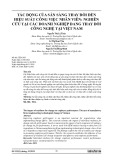
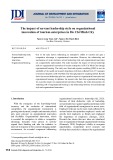
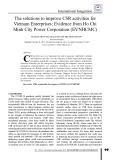
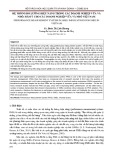
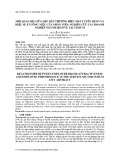
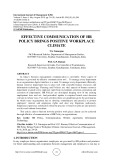


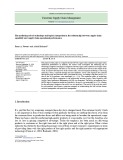

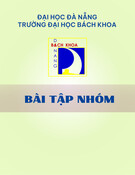
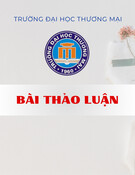





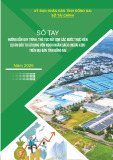
![20 câu hỏi Quản lý dự án phần mềm có đáp án [mới nhất]](https://cdn.tailieu.vn/images/document/thumbnail/2025/20251003/hieu2004haha@gmail.com/135x160/78791759734259.jpg)


![Tài liệu Quản lý dự án: Kiến thức nền tảng toàn diện [chuẩn SEO]](https://cdn.tailieu.vn/images/document/thumbnail/2025/20250910/kimphuong1001/135x160/92631757496585.jpg)



